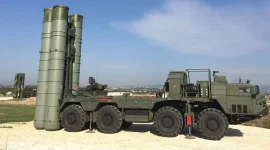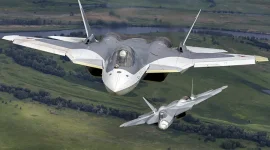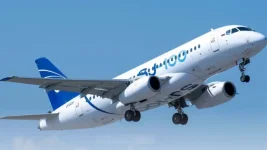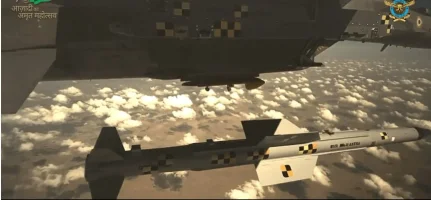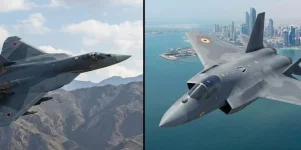In a significant development for the global aerospace defence sector, Russia’s United Engine Corporation (UEC) has officially released detailed specifications for its new engine family: the Izdeliye 177S and its advanced successor, the Izdeliye 177.
These afterburning turbofan engines have been designed to power 4++ generation fighters and upcoming 5th-generation stealth platforms, marking a critical step in Russia's efforts to maintain aerial competitiveness.
Two Distinct Paths for Modernisation
Officials from UEC, a subsidiary of the state corporation Rostec, clarified the distinction between the two variants during a recent briefing.The Izdeliye 177S is positioned as an immediate solution for upgrading existing fleets, while the prospective Izdeliye 177 is a more advanced powerplant intended for future stealth aircraft.
Both engines are built upon the reliable architecture of the AL-31F series, which currently powers the Su-30 and Su-35 fighter jets, but they incorporate significant technological advancements to meet 5th-generation standards.
According to UEC, these engines are designed to bridge the gap between current and future combat aviation needs. They feature improved thrust-to-weight ratios, greater fuel efficiency, and extended service lifecycles.
A spokesperson for the corporation noted that the 177 family is engineered to sustain Russia’s multirole fleet well into the 2050s, offering performance comparable to Western counterparts.
Technical Specifications and Performance
The newly released data highlights a clear performance hierarchy between the two models.The Izdeliye 177S serves as a robust interim option, delivering a maximum afterburner thrust of 14,500 kgf. In contrast, the future-oriented Izdeliye 177 increases this capability to 16,000 kgf.
The dry thrust figures also show a marked improvement, with the 177S producing 9,000 kgf and the 177 capable of 11,000 kgf.
Despite the increase in power, the engines maintain a compact profile with a 905 mm inlet diameter, ensuring they can be retrofitted into existing airframes like the Su-30 or fit within the internal bays of stealth fighters such as the Su-57 and the Su-75 Checkmate.
Key performance metrics released by UEC include:
- Fuel Efficiency: Both engines achieve a minimum specific fuel consumption of less than 0.67 kg/kgf·h in cruise mode. This represents a 15–20% improvement over the older AL-31F engines, significantly extending the combat range for long-endurance patrols.
- Service Life: The engines boast a service life exceeding 4,000 hours, effectively doubling the longevity of their predecessors. This is supported by embedded health diagnostics that predict maintenance needs before critical failures occur.
- Advanced Control: Both variants utilise Full Authority Digital Engine Control (FADEC) systems and feature thrust vector control (TVC) nozzles, which enhance the aircraft's manoeuvrability in combat.
Strategic Implications for India
The unveiling of these engines has direct implications for the Indian Air Force (IAF).Russia is actively pitching the Izdeliye 177S as a "plug-and-play" solution for the "Super Sukhoi" upgrade programme, which aims to modernise India’s massive fleet of Su-30MKI fighters. The engine's compatibility with existing AL-31F airframes means it could be integrated without requiring extensive structural modifications to the aircraft.
Furthermore, Moscow is positioning the more powerful Izdeliye 177 as a potential contender for India’s future indigenous stealth programmes, such as the Advanced Medium Combat Aircraft (AMCA).
While India is currently collaborating with Western partners like General Electric and Safran for jet engines, the Russian offer aims to provide a cost-effective alternative—reportedly 30% cheaper than the GE F414 or Eurojet EJ200—with the added advantage of established supply chains.
Future Outlook
While the 177S is ready for immediate deployment in Su-57 upgrades and export markets, the advanced Izdeliye 177 is targeted for full-scale production by 2028.It incorporates next-generation materials, such as ceramic-matrix composites, to withstand higher temperatures and utilises AI-optimised software for thrust management.
This development signals Russia's intent to remain a key player in the global defence market, offering nations like India, Algeria, and Vietnam a pathway to enhance their air power while navigating the complexities of modern geopolitical sanctions.


